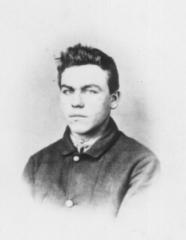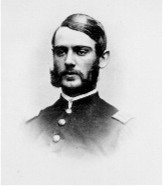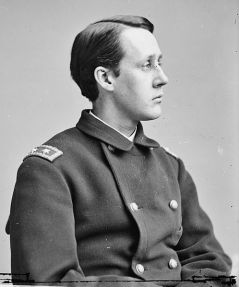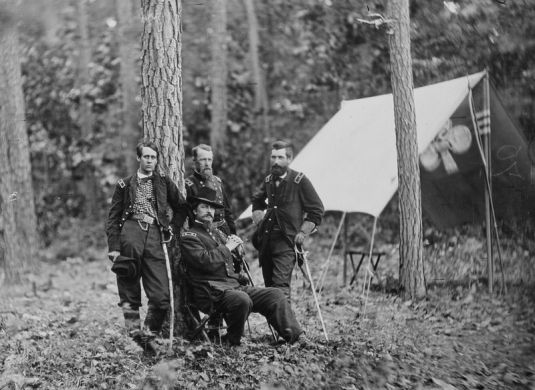You know when you reach that point in your day, when you are fairly positive you aren’t going to accomplish another thing until, like, tomorrow? Yeah. I hit that point at approximately 12:25 this afternoon. Lunch consumed. Break enjoyed. Brain turned off.
Let me tell you, it was not an easy thing to muscle through the rest of my day. My brain has been preoccupied with thoughts of my novel. Plotting (gasp!), dialogue, optional clothing changes and a scandalous twist that may or may not find its way into the next chapter. Probably not. But it’s tantalizing. Tantalizing. My week has been so exhausting that, while sitting at a stop light, I suddenly realized I was running through lines of potential dialogue. Out loud.
And I wonder why The Toddler gives me funny looks.
Anyway.
So, in this weird time frame of evening we found ourselves in, where the Maniac Children are enjoying their snacks and starting to wind down for bed, I sometimes peruse Pinterest. Because, you know, a person just can’t have enough recipes for cinnamon rolls. I also was checking out the history boards, since sometimes there are fun history tidbits and Lord knows I can’t get enough of random history trivia (and on occasion, horrifying ones: case in point, the description and accompanying pictures of mori memento, Victorian post mortem photography. Fascinating, yes. But learning the posed figure in front—who looks alive—is actually deceased and their eyes are painted on closed eyelids can be unsettling, to say the least). I stumbled upon a fantastic website.
Not only is daguerreotype one of my favorite words, but viewing daguerreotype of brutally hot gentleman ranks up there on my list of wasted time well spent. Right above pinning cinnamon roll recipes on Pinterest.
It has, on occasion, been pointed out that I’m weird. But look, I have found viable confirmation that I’m not alone in my appreciation of handsome men from years past. Look, just because a guy was strolling around town 150 years ago doesn’t make him less attractive. It doesn’t make him less real. It just makes him…less attainable. And more dead. Anyway, anyway, so, in honor of this and, moreover, because I haven’t actually done anything noteworthy in approximately two weeks, I give you my personal Top Five Brutally Hot Guys of the Civil War Who I’d Totally Let Squire Me About Town. In no particular order, they are:
- Private Alonzo Hayden, USA
Alonzo Hayden was born in 1839 and enlisted in the 1st Minnesota Volunteer Infantry (Company D). On July 3, 1863, the 1st Minnesota participated in a suicidal charge to help preserve the Union hold on Cemetery Ridge. Casualties were 215 men out of the 262 engaged. Alonzo was killed and buried near where he fell, only to be dug up and reinterred in the newly National Cemetery later that year. He was only 24 years old when he died. Fun fact: I actually visit his grave almost every time I’m in Gettysburg (see above reference to me being weird).
2. Major John Pelham, CSA
John Pelham was born in 1838 near Alexandra, Alabama. Out the outbreak of the Civil War, with only a few weeks remaining until graduation, he dropped out of West Point and enlisted in the Army. He rapidly rose through the ranks from artillery lieutenant under Joseph Johnson to major in Jeb Stuart’s horse artillery. “The Gallant Pelham” gained notoriety following Fredericksburg in December of 1862 when he manned two artillery pieces (some historians say foolishly, we’ll just say stubbornly) against a Union division until he ran out of ammunition and was forced to withdraw. Robert E. Lee said of him, “It is glorious to see such courage in one so young.” Pelham was killed during a cavalry engagement in Kelly’s Ford, Virginia, on March 17, 1863. He was 24 years old.
3. James Ewell Brown (Jeb) Stuart, CSA
Love. Him. Stuart was born in Patrick County, Virginia, in 1833 and graduated West Point in 1854. Though he spent a lot of his early military career in the West, notably Kansas, he was with (then) Captain Robert E. Lee during the apprehension of John Brown during the raid on Harpers Ferry, Virginia, in October 1859. He was scandalously fashionable, notably wearing too much cologne, a long feather in his hat, and a red lined cape. Dashing. He reportedly made the ladies swoon and took a five day break from the war in early September 1862 to throw a big party for his cavaliers prior to the Battle of Antietam. He was the eyes of the Army of Northern Virginia: he rode around the Federal Army, he skirmished, his lateness to the Battle of Gettysburg may or may not have contributed to the Confederate loss (and yes, what you’re thinking is correct: I say it didn’t). During the Battle of Yellow Tavern on May 11, 1864, a bullet ripped through his stomach and exited his body near his spine. He died the next day, May 12, before his wife and his children made it to his bedside. He was 31 years old.
4. Lieutenant Thomas Chamberlain, USA
I have, obviously, devoted an entire blog post to Thomas Chamberlain. But, generally speaking, he was born in Maine on April 29, 1841. Despite his mother’s wishes, he enlisted in the 20th Maine with his brother, Joshua. They basically sat around during the Battle of Antietam, but played a rather important role at Gettysburg. On Little Round Top. You may have heard of it. Following the war, Thomas continued to suffer from poor health, namely pulmonary and cardiovascular problems, and alcoholism. He couldn’t keep a job. He married his brother John’s widow and it was a tumultuous relationship, reportedly due to the fact that they both fully realized he wasn’t his brother. She said of him, “He seems to feel that he was born unlucky.” He died on August 12, 1896. He was 55.
5. General Francis C. Barlow, USA
Francis Barlow was born in Brooklyn in 1834. He studied law at Harvard, graduating first in his class, and eventually married a woman ten years older than him–and then one day later enlisting in the New York Militia. He was quiet. He was clean shaven. He wore a “checked flannel lumberjack shirt” under an unbuttoned coat. But he was tenacious and confident. He hated stragglers. He unfortunately had a crappy position at Gettysburg, now known as Barlow’s Knoll, which was easily attacked from all sides. They were over run, he was wounded, and left for dead on the field. That said. He survived the war and went on to dabble in politics before returning to law. He died on January 11, 1896. He was 61.
And, for further enjoyment, here’s Barlow in his “checked flannel lumberjack shirt.” This photograph alone makes my day a happy one.
So, what have we learned? We’ve learned I like officers. And we’ve learned many Civil War sesquicentennial facts you can share with all your friends tomorrow. We’ve also confirmed I’m a total liar, because I prefaced this as saying there was no particular order and I’m sitting here, now completely distracted by the above picture. Yes, Francis Barlow. You complete me.






You’re hilarious. I, too, share an affinity for someone who lived almost 200 years ago.
Thanks for stopping by! My first “historical crush” was Cadet Private William Hugh McDowell, due to my 4th grade obsession with the book “Ghost Cadet.” I still have the book….and I still (maybe creepily) have his picture in one of my writing notebooks. I’m still stuck on Barlow right now. I don’t think this is a passing fad, ha ha!